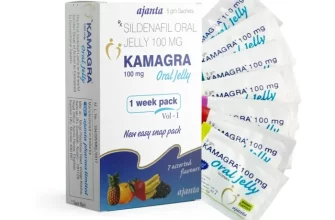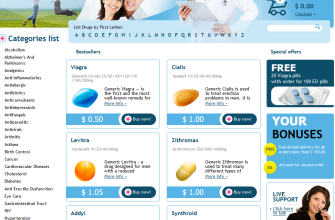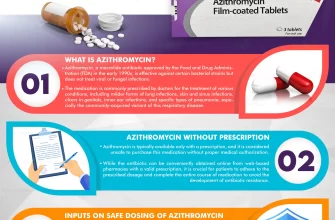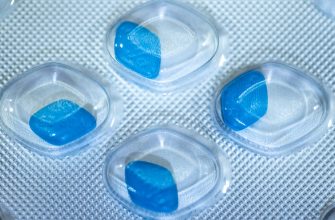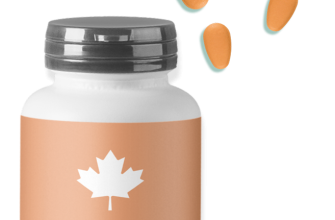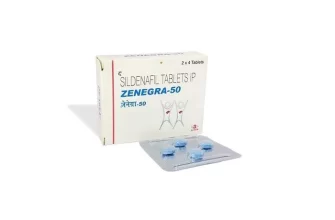Consider using Diflucan generics containing nystatin for treating fungal infections. These medications work effectively against a range of yeast infections, particularly Candida species. Both Diflucan (fluconazole) and nystatin serve distinct purposes in the antifungal treatment landscape, making them suitable for specific conditions.
Nystatin is primarily prescribed for localized infections, such as oral thrush or skin yeast infections, due to its topical application and minimal systemic absorption. It’s recommended for patients who require targeted treatment without the potential for systemic side effects. On the other hand, Diflucan provides a systemic approach, treating more extensive infections that may not respond well to localized therapies.
Combining these medications under medical supervision can optimize treatment outcomes for complicated cases. Always consult with a healthcare provider to determine the best antifungal strategy tailored to individual health needs and infection types.
- Diflucan Generic Nystatin
- How They Work Together
- Indications for Use
- Understanding the Active Ingredients in Diflucan and Nystatin
- Comparison of Indications for Use: Diflucan vs. Nystatin
- Mechanisms of Action: How Diflucan and Nystatin Work
- Clinical Applications
- Resistance and Considerations
- Dosage Guidelines for Diflucan and Nystatin Generic Forms
- Special Considerations
- Administration Tips
- Possible Side Effects and Drug Interactions of Diflucan and Nystatin
- Cost and Availability of Diflucan Generic and Nystatin
- Diflucan Generic
- Nystatin
- Best Practices for Taking Diflucan and Nystatin Effectively
Diflucan Generic Nystatin
Choose Diflucan as an effective treatment for fungal infections, especially when combined with Nystatin. These medications target different types of fungi, providing a broader range of action.
How They Work Together
Diflucan, or fluconazole, is an antifungal that inhibits the growth of fungi by interfering with their cell membrane formation. Nystatin works differently by binding to fungal cell membranes, making them more permeable and causing cell contents to leak out. This combination enhances antifungal efficacy.
Indications for Use
- Treating candidiasis, including oral thrush and yeast infections.
- Preventing fungal infections in immunocompromised patients, especially during chemotherapy.
- Managing systemic candidiasis effectively.
Consult your healthcare provider for personalized dosage adjustments. Monitor for adverse reactions, and report any unusual symptoms immediately. Maintain communication with your provider during treatment to ensure optimal results.
Understanding the Active Ingredients in Diflucan and Nystatin
Diflucan contains fluconazole, an antifungal that disrupts the synthesis of ergosterol, a key component of fungal cell membranes. This action inhibits the growth of a variety of fungi, making it effective against infections like candidiasis and cryptococcal meningitis.
Nystatin, on the other hand, works differently. It binds to ergosterol in the fungal cell membrane, forming pores that lead to leakage of cellular contents. This mechanism effectively targets Candida species, primarily during localized infections such as oral thrush or skin infections.
Both medications are important for treating fungal infections, but they target different aspects of fungal biology. While fluconazole spreads systemically and is suitable for more widespread infections, nystatin is typically used for topical applications or oral formulations for localized infections.
Dosage and administration also differ significantly. Fluconazole is available in various forms, including tablets, injectable solutions, and oral suspensions, allowing flexibility based on the severity of the infection. Nystatin is primarily available as an oral suspension or topical cream, making it ideal for direct application.
When considering treatment options, it’s essential to consult a healthcare provider to determine which medication best addresses specific fungal infections. They will evaluate the type of infection, its location, and the patient’s medical history. Regular follow-ups are recommended to monitor progress and adjust treatment as necessary.
Understanding these active ingredients helps in making informed decisions regarding antifungal therapy and highlights the importance of using these medications as directed by a healthcare professional.
Comparison of Indications for Use: Diflucan vs. Nystatin
Diflucan (fluconazole) primarily targets systemic fungal infections, especially those caused by Candida species. It is often prescribed for conditions such as cryptococcal meningitis and esophageal candidiasis. Patients with compromised immune systems, like those undergoing chemotherapy or living with HIV/AIDS, frequently require Diflucan for effective treatment.
Nystatin, on the other hand, is commonly used for localized fungal infections. It treats oral thrush and intestinal candidiasis, making it suitable for patients who need topical or oral antifungal therapy. Nystatin effectively acts on superficial infections but lacks systemic absorption, limiting its use to non-invasive fungal issues.
The choice between Diflucan and Nystatin hinges on the type of infection and its location. For invasive infections requiring systemic treatment, Diflucan is the go-to option. For managing surface-level fungal outbreaks, particularly in warm, moist areas of the body, Nystatin provides direct relief.
Choosing the right medication involves considering the patient’s overall health, the severity of the infection, and specific medical histories. Always consult a healthcare provider for personalized advice tailored to individual needs.
Mechanisms of Action: How Diflucan and Nystatin Work
Diflucan (fluconazole) and nystatin target fungal infections through distinct yet effective mechanisms. Diflucan inhibits the synthesis of ergosterol, a crucial component of fungal cell membranes. By disrupting ergosterol production, it increases membrane permeability, leading to cell death. This action is particularly effective against Candida spp. and certain other fungi, making Diflucan a popular choice for systemic infections.
Nystatin operates differently. It binds to ergosterol in the fungal cell membrane, creating pores that allow intracellular contents to leak out. This disruption leads to cell death, particularly in yeast infections. Nystatin is primarily used topically or orally for localized infections, such as oral thrush or skin candidiasis.
Clinical Applications
When treating systemic fungal infections, Diflucan is often preferred due to its oral bioavailability and ability to penetrate various tissues, including the central nervous system. Nystatin, on the other hand, is effective for superficial infections. Its topical application limits systemic absorption, minimizing potential side effects.
Resistance and Considerations
Fungal resistance to Diflucan can occur, particularly in immunocompromised patients. When faced with resistant strains, alternative antifungals may be necessary. Nystatin resistance is less common, but its scope of use is limited to specific types of infections. Understanding these mechanisms enhances treatment selection and patient outcomes.
Dosage Guidelines for Diflucan and Nystatin Generic Forms
For adults, the typical starting dose of Diflucan (fluconazole) for treating a yeast infection is 150 mg orally as a single dose. In cases of systemic fungal infections, the first dose may be higher–ranging from 400 mg to 800 mg, with maintenance doses typically between 200 mg to 400 mg once daily. Adjustments may be needed based on patient renal function or level of infection severity.
Nystatin, often used to treat candidiasis, is available in various forms including oral suspension and tablets. For oral suspension, the recommended dose for adults is usually 400,000 to 600,000 units taken four times a day. The treatment generally lasts for about 7 to 14 days, depending on the severity of the infection. Pediatric dosages are adjusted based on age and weight, often around 100,000 units per day for children, divided by three doses.
Special Considerations
Patients with liver impairment receiving Diflucan may require careful monitoring and dose adjustments due to the risk of hepatic toxicity. Monitoring liver function tests is advisable. For Nystatin, systemic absorption is minimal; therefore, it is considered safe in pregnancy. However, always consult a healthcare provider for tailored advice.
Administration Tips
Take Diflucan with or without food, and it can be taken in tablet form or as an oral suspension. For Nystatin, ensure to swish the oral suspension in the mouth for as long as possible before swallowing to enhance effectiveness. Use a dosing syringe for accuracy when administering Nystatin to children. Consistency in dosing times will help maintain drug levels in the body.
Possible Side Effects and Drug Interactions of Diflucan and Nystatin
Both Diflucan (fluconazole) and Nystatin can lead to side effects, though their profiles differ significantly. Monitoring for adverse reactions is important.
- Diflucan Side Effects:
- Nausea
- Headache
- Dizziness
- Abdominal pain
- Altered liver function tests
- Skin rash
- Fatigue
- Nystatin Side Effects:
- Diarrhea
- Nausea
- Vomiting
- Skin irritation (topical use)
- Rarely, allergic reactions
Regular assessments of liver function are recommended for patients on Diflucan due to the potential for hepatotoxicity. Discontinue use and consult a healthcare provider if jaundice or severe abdominal pain occurs.
Drug interactions deserve careful consideration. Diflucan is a known CYP450 enzyme inhibitor and can affect the metabolism of several drugs, including:
- Warfarin – increased bleeding risk
- Oral hypoglycemics – altered blood sugar control
- Phenytoin – potential toxicity
Consult a healthcare provider to review all current medications before starting Diflucan. Nystatin, primarily used topically or orally, has fewer significant interactions, but it’s crucial to ensure there’s no conflicting therapy that could exacerbate gastrointestinal side effects.
Recognizing side effects and potential drug interactions enhances treatment safety and efficacy. Always report any unusual symptoms to a healthcare professional immediately.
Cost and Availability of Diflucan Generic and Nystatin
Diflucan generic and Nystatin are both widely available and relatively affordable antifungal medications. Prices can vary depending on the pharmacy, insurance coverage, and specific formulations. Here’s a quick overview of costs and where to find these medications.
Diflucan Generic
The generic version of Diflucan, typically referred to as fluconazole, is available in most pharmacies. Prices range from $10 to $30 for a typical prescription of 150 mg, depending on location and insurance. Many pharmacies offer discount programs or coupons that can further reduce costs. It is advisable to shop around or use a prescription discount card to obtain the best price.
Nystatin
Nystatin, available as an oral suspension or topical cream, is also accessible at pharmacies nationwide. The price for oral Nystatin is usually between $4 and $20, while topical formulations are typically less expensive. Generic options ensure that patients can obtain these medications without significant financial strain. Some pharmacies may provide Nystatin at no cost, especially for low-income patients or those with certain insurance plans.
| Medication | Formulation | Typical Price Range |
|---|---|---|
| Diflucan (Fluconazole) | 150 mg | $10 – $30 |
| Nystatin | Oral Suspension | $4 – $20 |
| Nystatin | Topical Cream | Generally < $10 |
For convenience, online pharmacies and mail-order services often stock both Diflucan and Nystatin, providing delivery options that enhance access. Always consult with a healthcare provider for medication management and to ensure the most effective treatment for your condition.
Best Practices for Taking Diflucan and Nystatin Effectively
Take Diflucan (fluconazole) as prescribed, generally once a day for a fixed duration. Swallow the tablet whole with a glass of water, and avoid taking it with dairy products as they may interfere with absorption.
For optimal results with Nystatin, administer the oral suspension directly into the mouth, allow it to remain in contact with the affected areas for as long as possible before swallowing. Maintain this routine four times daily after meals to enhance efficacy.
Stay hydrated while on these medications. Consuming enough fluids helps to support kidney function and aids in the elimination of the drugs from the system. Monitor your body’s response and report any unusual side effects to your healthcare provider immediately.
Follow a consistent schedule for taking your medications to build a routine. Setting alarms or reminders can help you remember your doses and maintain regularity. Double-check to ensure you haven’t missed any doses.
Inform your healthcare provider about all other medications, supplements, or herbal products you use. Some interactions can affect how well these antifungals work or increase the risk of side effects.
Avoid alcohol while taking these medications, as it may lower their effectiveness and increase the likelihood of adverse reactions. Stick to a balanced diet to support your treatment.
After completing the course, follow up with your healthcare provider to assess treatment progress and discuss any ongoing symptoms. Maintaining open communication is key for monitoring your condition and adjusting treatment if necessary.



